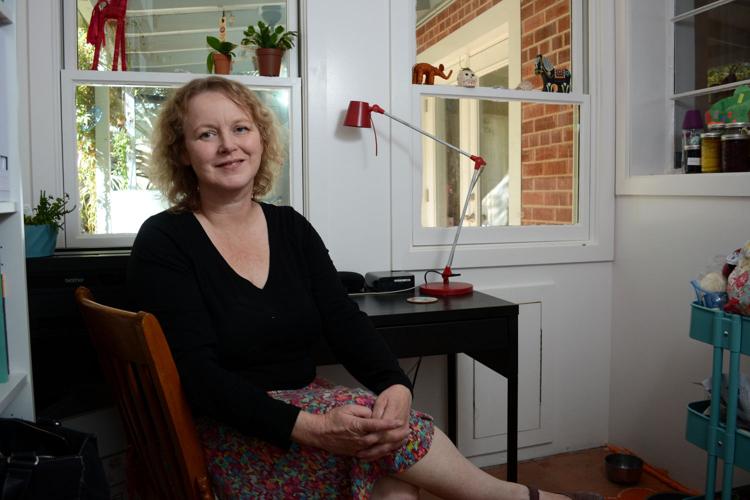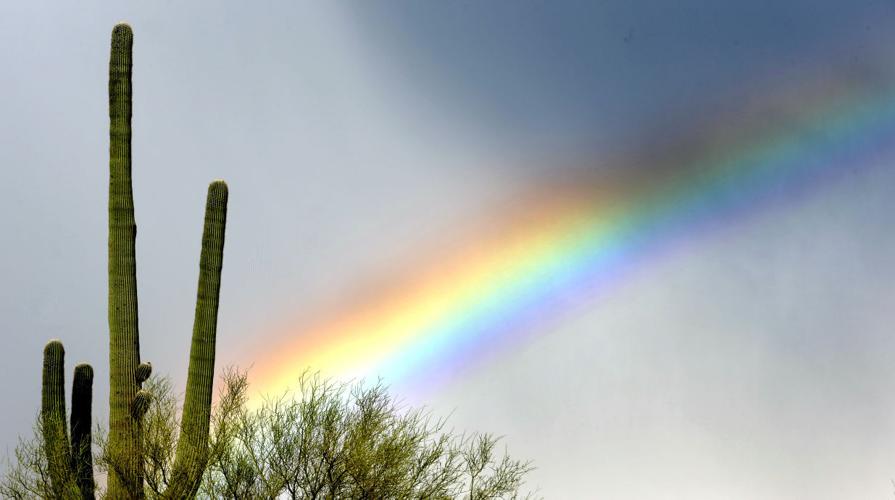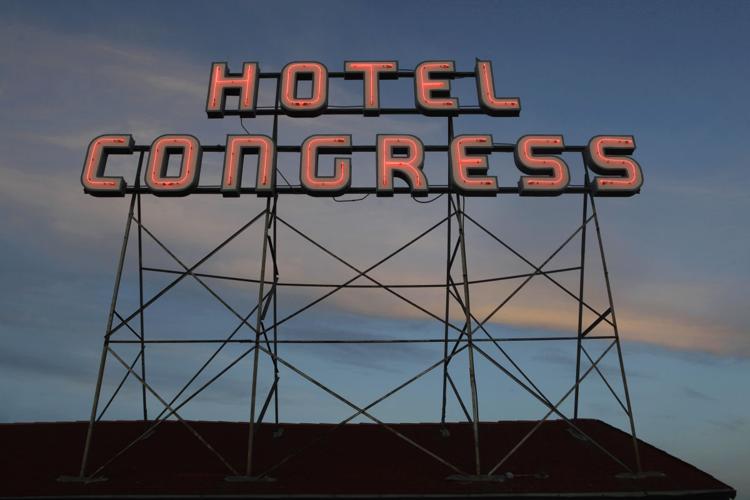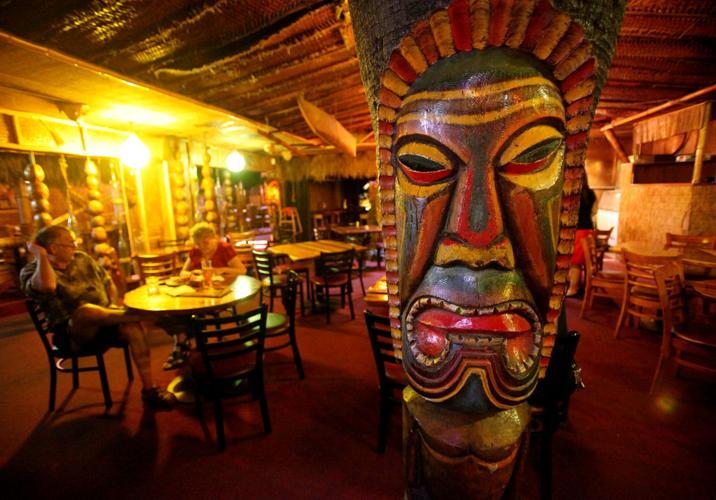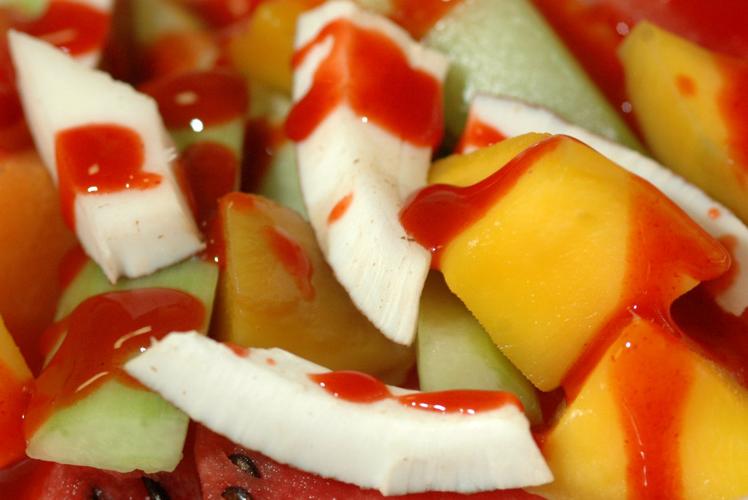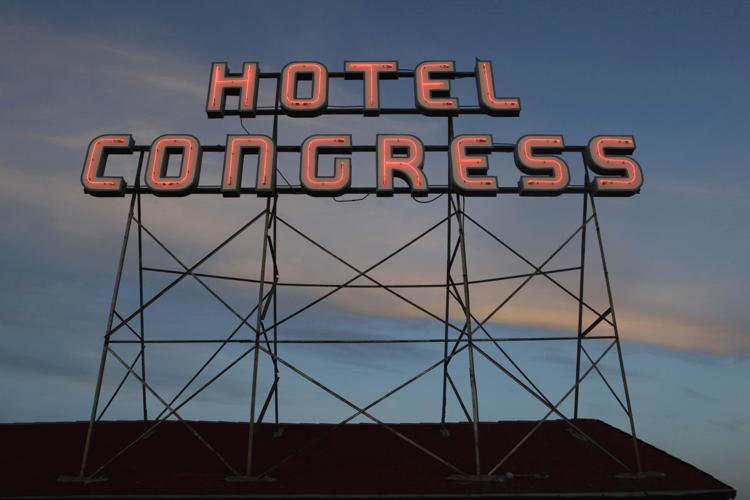Every now and then, when the swamp cooler chugs along and summer sizzles, Rachel Miller contemplates moving somewhere else.
But then she remembers — the smell of sweet acacia and blooming citrus, star-studded skies and wide open spaces, pico de gallo and margaritas, concerts in the parks and art in the streets.
Tucson.
She can’t cheat on the city that stole her heart.
Miller, 46, grew up in Liverpool, England, and had little say in her relocation to the Old Pueblo. With her dad a faculty member at the University of Arizona, Miller came to Tucson for college.
She planned to stay 2½ years.
That was 2½ decades ago.
Now, Miller runs the website Love Letters to Tucson, where Tucsonans past and present sing praises about the city’s balmy winters, big hearts and bold spirits.
“It’s about seeing Tucson through its inhabitants instead of just as this poor town in the Southwest,” says Miller, who manages Tucson Medical Center’s social media. “It’s something more than that. It’s seeing the actual experiences.”
Since 2012, Tucson’s residents have celebrated spots such as Hotel Congress, Valley of the Moon, Kon Tiki Restaurant and Lounge and the Community Food Bank of Southern Arizona.
Others pine for a city they once called home.
“How to explain?” writes Matthew Kenworthy, an associate professor at Leiden Observatory in the Netherlands. “That feeling when you are sitting outside in July, and the car thermometer has to invent new numbers to show how hot it is. Watching the monsoon storms muster their strength and the pa-rap-a-pa-pap into midtown, the smell of creosote bushes pushed by rain driven winds, the first time I was caught out at Grant and Mountain so hard and fast I was laughing like an idiot, soaked to my skin as the drainage roads were lost under three feet of water.”
Kenworthy spent about 10 years in Tucson, on and off, after a childhood in London’s outer suburbs. The scenery of the Southwest captivated him in a way his European friends can’t understand.
“As a kid, I’d watched the Wile E. Coyote and Road Runner cartoons and assumed that the scenery was totally made up,” he wrote in an email from the Netherlands. “Coming out here it all seemed unreal and a million miles away from anything I’d known before.”
Reading letters like his keep Miller here.
She wants to see this community grow and thrive.
“At nighttime, you’ve got the city cooling and there are these great smells and the stars,” she says. “And we say, ‘Oh, this is why we live here,’ margarita in hand. You read a letter and think, ‘I would miss this.’”
Not love at first sight
For Miller, falling in love with Tucson required adventuring beyond the bounds of the UA campus.
“I grew up somewhere where you never saw the stars,” Miller says. In Tucson, “you can go outside and there is a galaxy to be seen.”
Her husband, an astronomer, proposed a Valentine’s Day hike near Gates Pass, and eventually her fears of scorpions and snakes subsided.
“Tucson isn’t a place that wows you immediately,” says Gillian Drummond, a friend of Miller’s and fellow Briton-turned-Tucsonan. “I think it gets under your skin slowly, and coming from Britain, it was literally like an alien landscape, like I landed on the moon.”
But the grandeur of it all got to her, too, and a move from northwest Tucson to midtown sealed the deal. Not long ago, Drummond, 48, ran the online 3StoryMagazine that celebrated all things Tucson and also published Miller’s love letters. Drummond, who moved here in 1998, wrote an early letter about Hotel Congress.
Transplants writing on the site express a range of emotion. Some are thrilled to move here. Others need some convincing.
One letter begins, “I want to tell you a little story ... about a military family ... who got orders to Tucson, Arizona. They were DREADING it.”
And then, the conversion.
“The smells here are amazing! The views are spectacular and all the little creatures make the coolest noises ... We bought a house, started gardens ... and plan to maybe retire here.”
Getting engaged
This is the place where Miller is raising her son, 4, and daughter, who turns 9 on Valentine’s Day.
Here, they have access to nature, cultural diversity and loads of music.
Here, they have a community to grow into.
“I think the value of community is really important to me in recognizing that is one of the best things I can give my kids,” she says. “You can pay for fancy schools, or whatever, but you can’t create community with money.”
As a kid in Liverpool, Miller saw her parents’ own community involvement. They served on health advisory councils and school boards and took their children along to protests.
For Miller, local engagement looks like Love Letters to Tucson, volunteering at her daughter’s school, leading Girl Scouts and traipsing the city to interview TMC patients about their experiences at the hospital.
“One day I can be driving up to the north side of town to a physician’s house to interview them about their child’s surgery,” she says. “And the next day I’m on the southwest side by the casino in a trailer park with another family talking about their baby’s experience in the hospital.”
Matters of the heart
When Miller talks about love and hearts, it’s not just Valentine’s Day talk.
It’s the stuff of life and death.
At the age of 27, Miller survived cardiac arrest, caused by a genetic heart condition — arrhythmogenic right ventricular cardiomyopathy — that turns parts of the heart’s muscle into fibrosis and fat. She lost her brother to that same disease when he was 24.
“They recommend yoga and walking, but exercise or anything that stresses the heart muscle, whether it’s lifting weights or just stress ... that’s not good,” she says. “The progression of the disease in me seems to be fairly slow.”
Now, Miller speaks as a survivor and advocate for the American Heart Association. For babies born in February — American Heart Month — Miller and a group of friends are knitting red caps as part of the Little Hats, Big Hearts campaign to raise awareness about congenital heart defects.
Again, it comes back to facing both trial and triumph as a community.
The ties that bind
Miller does not deny the divisions crisscrossing this city, but in her opinion that’s no excuse for overlooking the thing everybody shares.
“We’re all living in this place, and if we can value this place, we can have a common place to start talking,” she says.
Maggie Rickard, who wrote a love letter about Kon Tiki, says she and Miller don’t actually have much in common, despite their long friendship.
Rickard, 43, owns Velvet Glass, a mosaics business, with her husband and is launching an all-female surf band. Miller’s background is in science, teaching and academic advising.
But they share a sense of humor, take care of each other’s pets and spend long hours talking over a glass (or glasses) of wine.
“It’s kind of like a love letter to Tucson,” says Rickard, who moved to Tucson from New York about 15 years ago. “Everyone has this different perspective they come from, but it all works together.”
That is what Miller hopes to accomplish in bringing together the voices of city councilmen and artists, business owners and philanthropists, old-timers and passersby.
“I would like the site to be someplace where we celebrate so that when people look up Tucson, they go, ‘I can appreciate this place,’” she says. “Maybe I don’t agree with the politics or I have a different background from someone, but we both live in this place that is full of dichotomies and has some real beauty to it. Sometimes you have to scratch the surface to get to it.”


